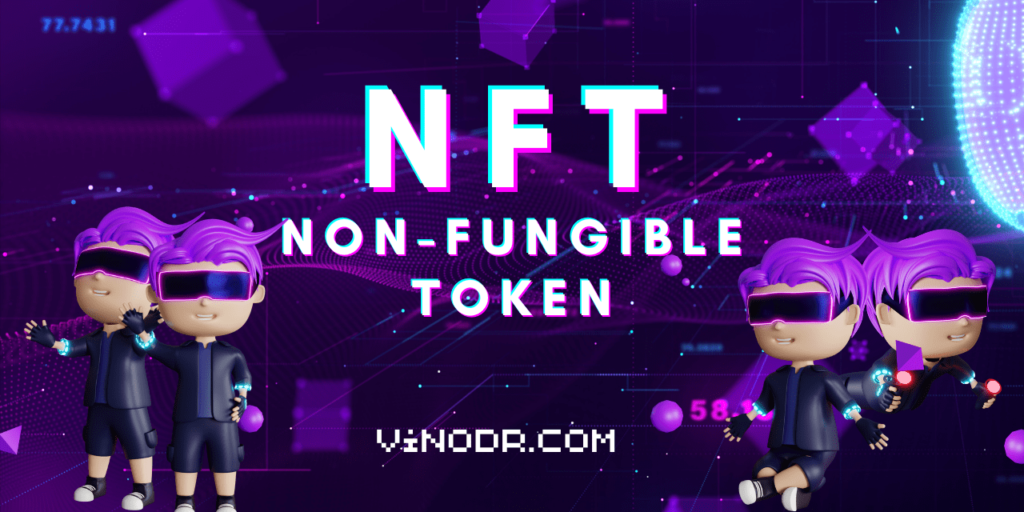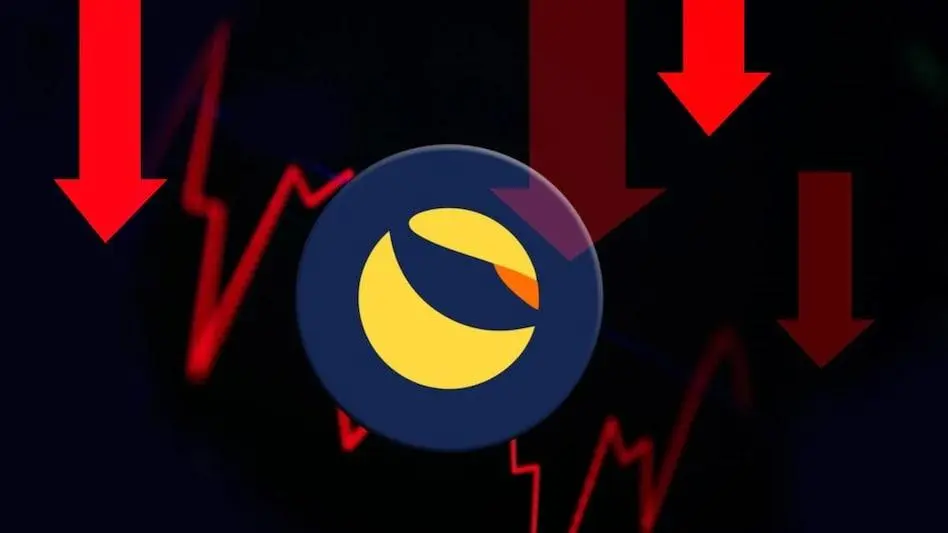NFT Meaning What is an NFT
Know All about NFT's (Non-Fungible Token)
NFT Meaning
NFT stands for Non-Fungible Token, which is a digital asset that represents ownership of a unique item or piece of content. Unlike traditional cryptocurrencies such as Bitcoin or Ethereum, which are fungible and interchangeable, each NFT is unique and cannot be replicated or divided into smaller units.
NFTs are created using blockchain technology, which ensures their authenticity and ownership. They can represent a variety of digital assets, including artwork, music, videos, memes, tweets, and more.
When an NFT is sold, the ownership of the digital asset it represents is transferred to the buyer. This means that NFTs can be bought and sold just like physical art or other collectibles. NFTs have become popular in the art world, with some pieces selling for millions of dollars at auction.
NFTs have also been criticized for their environmental impact, as the process of creating and trading them requires a significant amount of energy. However, many proponents argue that NFTs offer a new way for creators to monetize their work and establish ownership in the digital age.
How are NFTs created?
NFTs are created using blockchain technology, which is a distributed digital ledger that records transactions securely and transparently. Most NFTs are created on the Ethereum blockchain, although other blockchains can also be used.
To create an NFT, a creator must first create a digital asset that they want to represent, such as a piece of artwork or a music file. They then use an NFT platform, such as OpenSea or Rarible, to mint the NFT.
Minting an NFT involves creating a unique digital token that represents the ownership of the underlying asset. The creator will typically need to provide a title, description, and image or video of the asset, as well as set the price and royalty percentage for future sales.
Once the NFT is created, it is stored on the blockchain and can be bought and sold like any other digital asset. When an NFT is sold, the ownership of the underlying asset is transferred to the buyer, and the creator typically receives a percentage of the sale price as a royalty.
While creating an NFT can be relatively simple, it does require some technical knowledge and familiarity with blockchain technology. There are also fees associated with minting an NFT, such as transaction fees and gas fees, which can be significant during times of high network congestion.
How are NFTs (non-fungible tokens) bought and sold?
NFTs can be bought and sold on various online marketplaces, such as OpenSea, Rarible, SuperRare, and Nifty Gateway. These marketplaces allow creators to mint their NFTs and offer them for sale, and buyers to search for and purchase NFTs that interest them.
To buy an NFT, a buyer typically needs to have a cryptocurrency wallet that is compatible with the blockchain on which the NFT is created. For example, if the NFT is created on the Ethereum blockchain, the buyer will need an Ethereum wallet that supports the ERC-721 token standard.
Once the buyer has identified an NFT they want to purchase, they can place a bid or make an offer on the marketplace. If the offer is accepted, the buyer will need to transfer the required amount of cryptocurrency to the seller’s wallet to complete the transaction.
When selling an NFT, the creator typically sets a price or minimum bid amount for the NFT, as well as a percentage royalty for future sales. The creator receives the proceeds from the initial sale, minus any fees charged by the marketplace, and continues to receive a percentage of the sale price each time the NFT is resold.
It’s worth noting that the value of NFTs can be volatile and is largely determined by market demand. While some NFTs have sold for millions of dollars, others may not receive any bids or offers at all. Additionally, there are fees associated with buying and selling NFTs, such as transaction fees and gas fees, which can be significant during times of high network congestion.
Advantages of NFTs (non-fungible tokens)
There are several advantages associated with NFTs:
Unique ownership: NFTs are unique and cannot be replicated, which means that they can be used to represent ownership of unique digital assets, such as artwork, music, videos, and game items.
Authenticity: NFTs are stored on a blockchain, which provides a secure and transparent way to verify the authenticity and ownership of digital assets. This can help to prevent fraud and counterfeiting.
Royalties: NFTs can include royalty mechanisms that allow creators to earn a percentage of the sale price each time the NFT is resold. This can provide a new revenue stream for artists and other creators, who may have previously struggled to earn ongoing income from their work.
Global reach: NFTs can be bought and sold on a global scale, which means that creators and buyers from around the world can participate in the market. This can help to create new opportunities for artists and other creators to reach a broader audience and monetize their work.
Programmability: NFTs can be programmed with smart contracts that can include various conditions and rules for ownership, royalties, and other aspects of the transaction. This can enable new types of business models and use cases, such as fractional ownership and automated revenue sharing.
NFTs offers a new way to invest in and monetize digital assets, and they have the potential to transform various industries, such as art, music, gaming, and more.
Disadvantages of NFTs
While NFTs offer several potential advantages, some disadvantages should be considered:
Volatility: The value of NFTs can be highly volatile and subject to sudden changes in market demand and pricing. This can make it difficult to determine their true value and can lead to significant losses for investors.
Environmental impact: NFTs are created and stored on a blockchain, which requires a significant amount of energy and computing power. This can contribute to the carbon footprint of the technology and has raised concerns about the environmental impact of NFTs.
Lack of regulation: The NFT market is largely unregulated, which can make it more difficult to protect against fraud, scams, and other forms of misconduct. This can create risks for buyers and sellers and can make it more difficult to enforce contracts and resolve disputes.
Exclusivity: While NFTs can provide new opportunities for artists and other creators to monetize their work, they can also reinforce exclusivity and elitism in certain industries. This can make it more difficult for emerging artists and creators to gain exposure and recognition.
Limited utility: While NFTs can represent ownership of unique digital assets, they do not have inherent value beyond their perceived cultural and market value. This means that they may have limited utility beyond their role as a speculative investment.
NFTs offer some potential benefits, but they also have some significant drawbacks that should be carefully considered before investing or participating in the market.
Should you invest in an NFT?
The decision to invest in an NFT depends on a variety of factors, including your interests, investment goals, risk tolerance, and budget.
It’s important to keep in mind that the value of NFTs can be highly speculative and volatile, and the market can be subject to sudden swings in demand and pricing. Some NFTs have sold for millions of dollars, while others may not receive any bids or offers at all.
If you are considering buying an NFT, it’s important to do your own research, understand the risks involved, and only invest what you can afford to lose. You should also consider the legitimacy and authenticity of the NFT, as well as the reputation and track record of the marketplace and the creator.
While NFTs can offer a new way to invest in digital assets and support creators, it’s important to approach them with caution and to make informed decisions based on your own circumstances and priorities.
The top NFT marketplaces
OpenSea is the largest NFT marketplace, with a wide range of NFTs available for purchase, including art, collectibles, game items, and more. It supports a variety of blockchains, including Ethereum, Polygon, and Klaytn.
Rarible is another popular NFT marketplace that allows creators to easily mint and sell their own NFTs, and buyers to discover and purchase unique digital assets. It also supports multiple blockchains, including Ethereum and Flow.
SuperRare is a curated NFT marketplace that focuses on high-quality art and digital collectibles. It has a more selective approach to the NFTs it lists, and it tends to feature higher-priced and more exclusive offerings.
Since the NFT market is constantly evolving, it’s possible that new marketplaces may emerge or existing ones may gain or lose popularity over time.
Future of NFTs
NFTs have the potential to transform various industries and change the way we think about ownership and value in the digital world.
While the market for NFTs has experienced significant growth and attention in recent years, it is still a relatively new and evolving technology. As more creators and buyers enter the market, new use cases and business models are likely to emerge, and the technology may continue to evolve and improve.
Increased mainstream adoption: As more people become familiar with NFTs and their potential uses, we may see increased adoption and integration of the technology into various industries, such as music, sports, and gaming.
Integration with other technologies: NFTs may be integrated with other technologies, such as augmented reality and virtual reality, to create new immersive experiences and use cases.
More sustainable solutions: As concerns over the environmental impact of NFTs continue to grow, we may see the development of more sustainable solutions, such as the use of renewable energy and carbon offsetting.
Improved regulation: As the NFT market continues to mature, we may see increased regulation and oversight to protect against fraud and other forms of misconduct.
The future of NFTs is likely to be shaped by a variety of factors, including technological advancements, market demand, and regulatory developments. As the technology continues to evolve, it will be important to monitor these trends and consider the potential opportunities and risks associated with NFTs.



